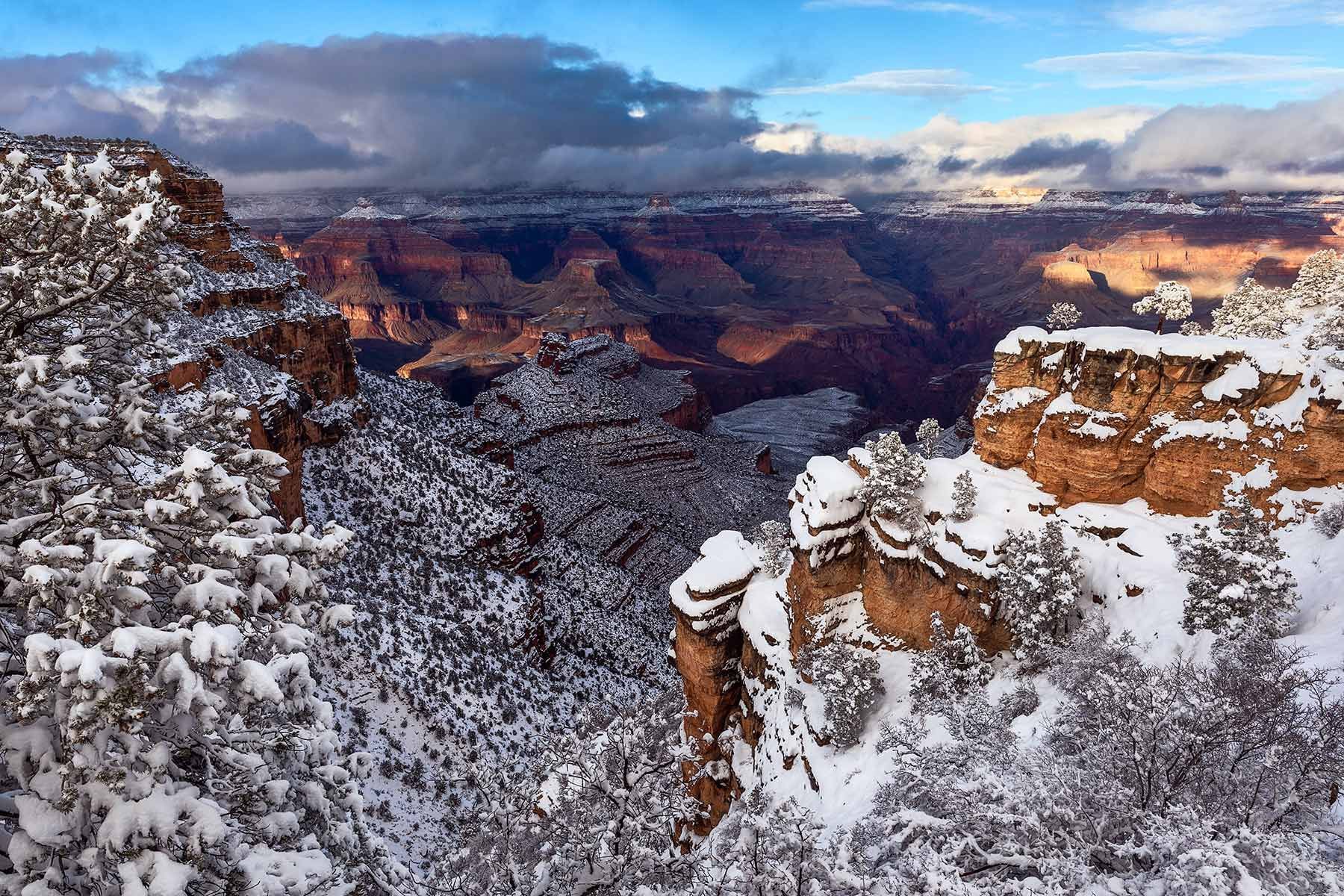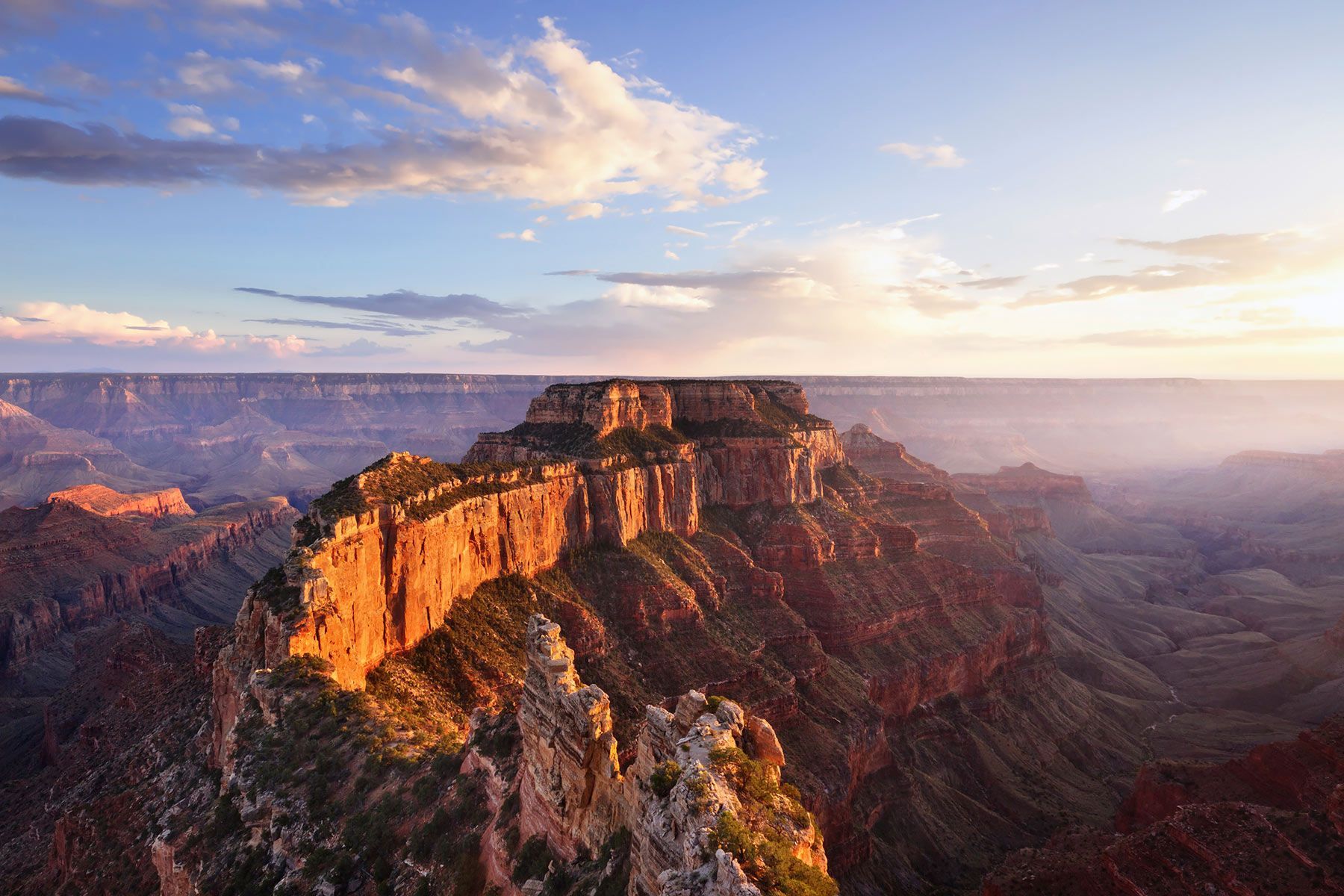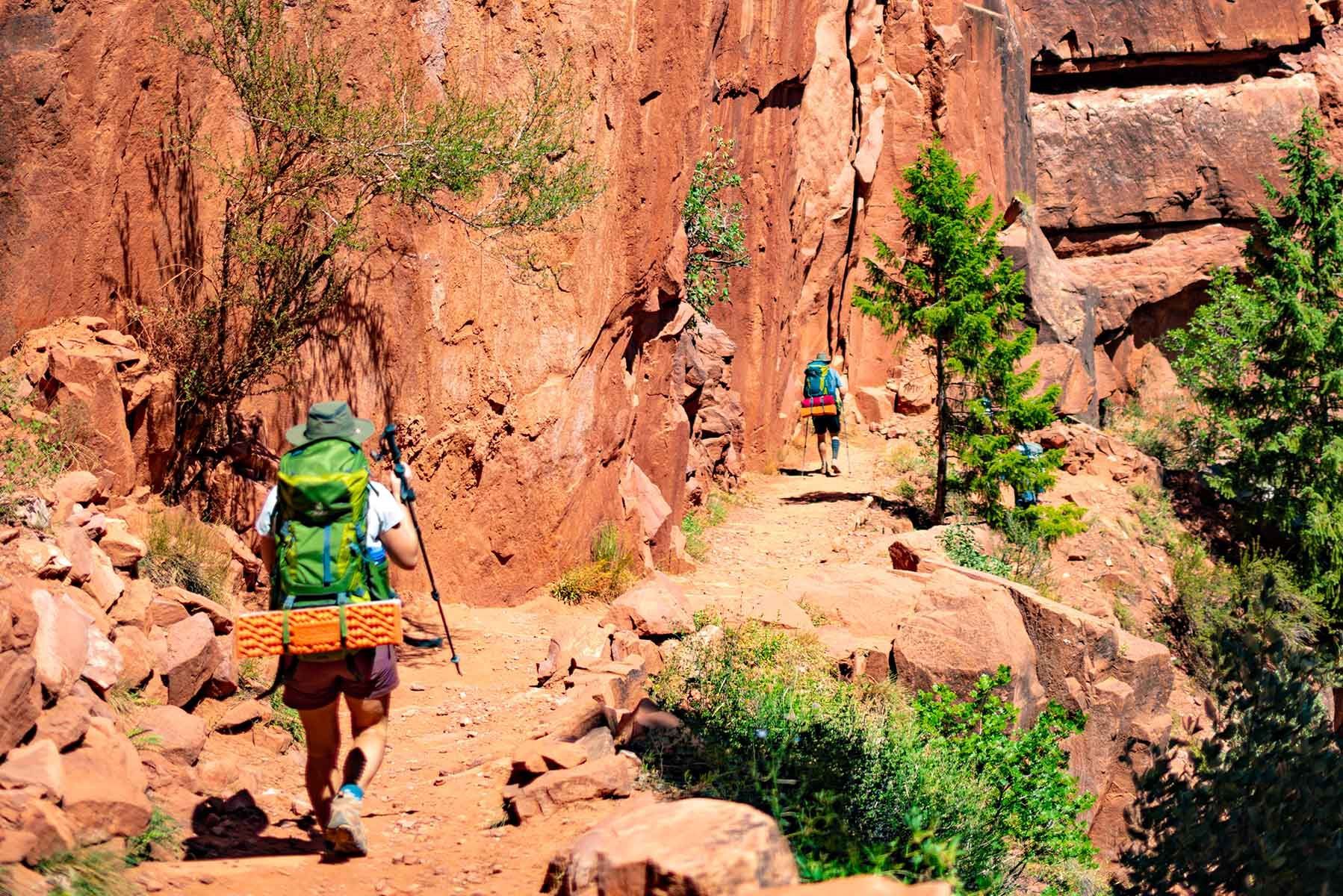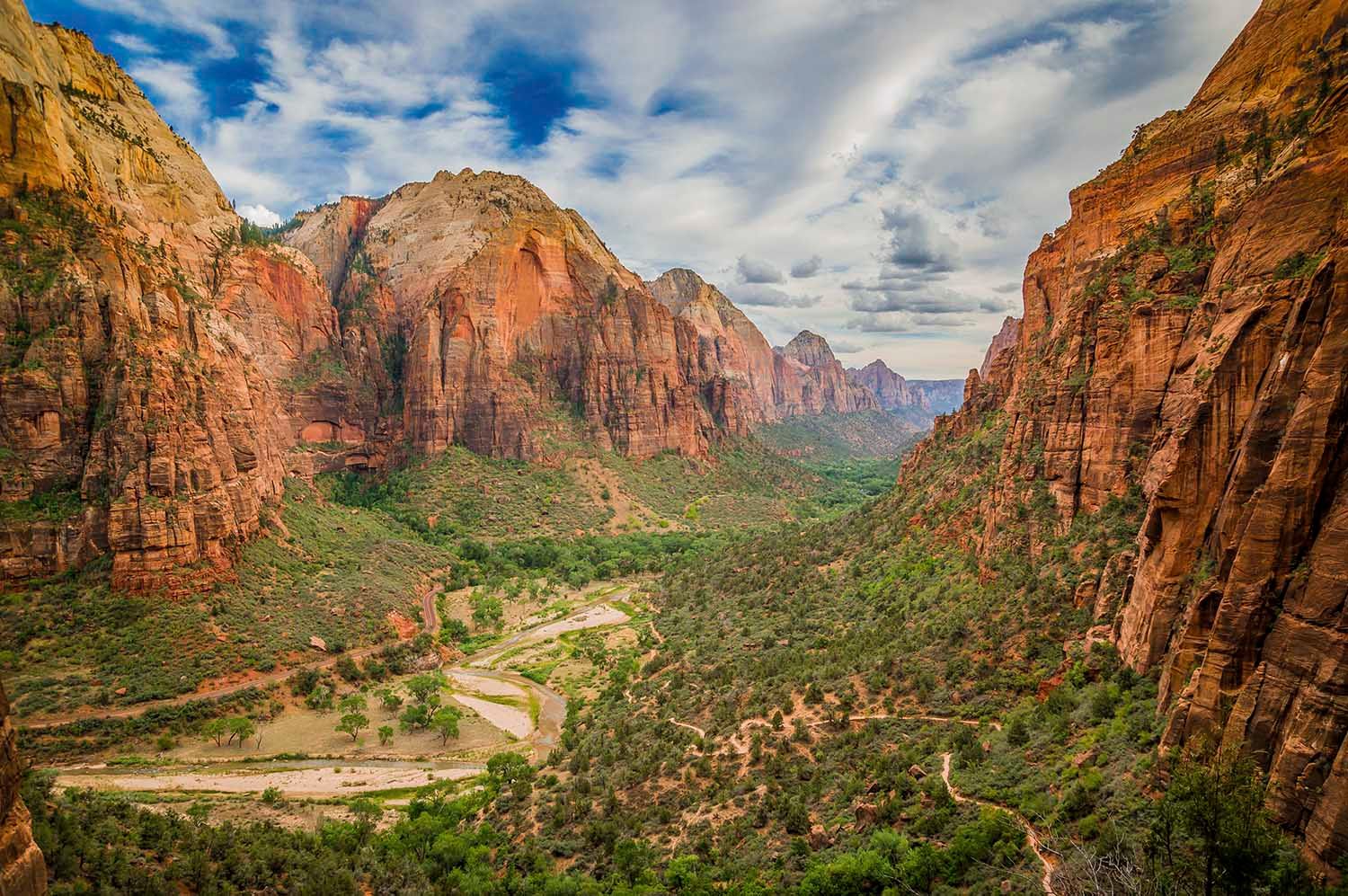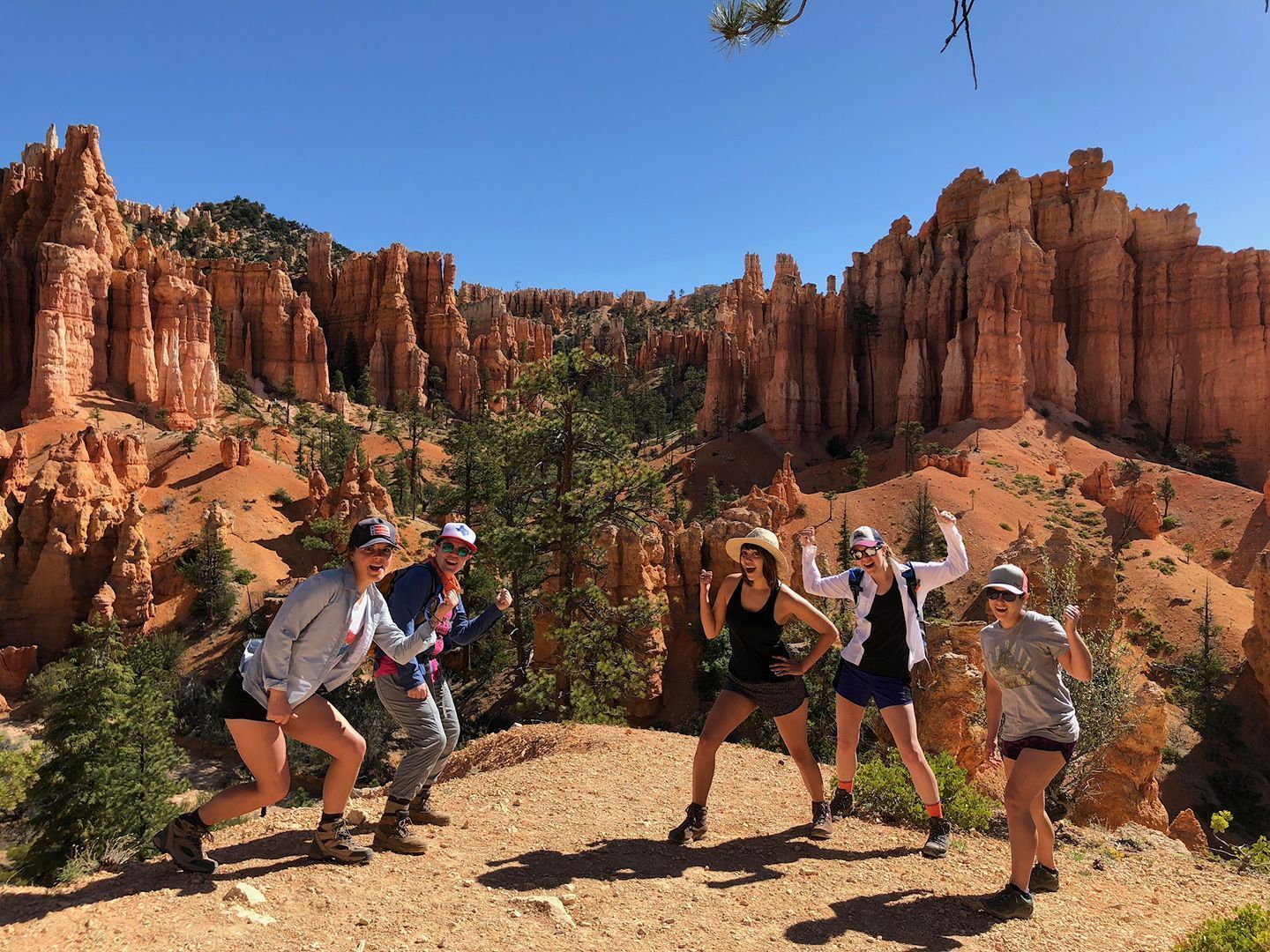Remote & Wild: A True Grand Canyon Adventure
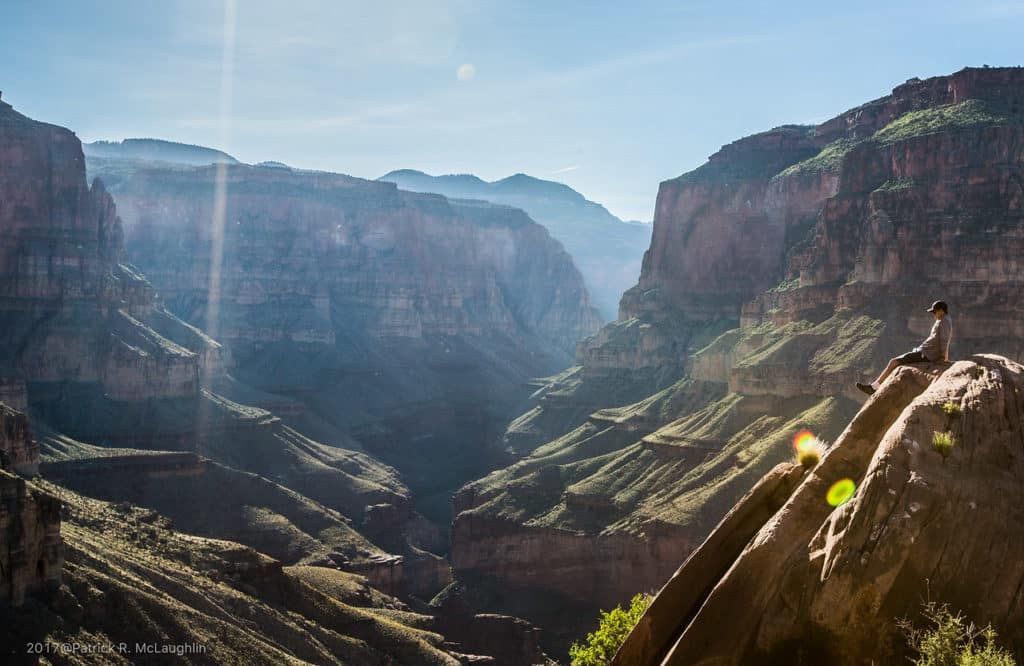
Thunder River/Deer Creek Loop:
This is one of our guides’ favorite backpacking trips in Grand Canyon. While this is one of the more challenging trips we offer in the canyon, it is also one of the most rewarding. This loop hike travels into a remote section of the western North Rim of the park and covers several truly unique destinations.
This route begins and ends at remote Monument Point and the Bill Hall Trailhead. This rugged trail makes a rapid descent to the expansive red rock plateau known as the Esplanade, where you’ll have endless opportunities to explore the nooks and crannies of this Mars-like landscape.
This is also a spectacular spot to set up camp and enjoy an unbeatable Grand Canyon sunset prior to dropping further into the canyon.
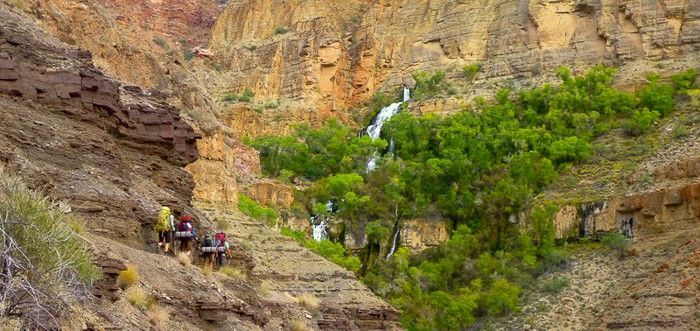
Key Takeaways
- The Thunder River/Deer Creek Loop is one of the most remote and rewarding Grand Canyon backpacking adventures, offering dramatic landscapes from the Esplanade plateau to hidden waterfalls and lush side canyons.
- This multi-day Grand Canyon hiking trip challenges trekkers with steep descents, boulder fields, and climbs, balanced by breathtaking views and serene campsites away from tourist crowds.
- Highlights include the Deer Creek Narrows, the 120-foot Deer Creek waterfall, and the awe-inspiring Thunder River, which bursts directly from the canyon walls.
- Perfect for those seeking solitude, this route showcases the canyon’s quieter North Rim wilderness and opportunities for authentic connection with nature.
- Completing the loop provides a deep sense of accomplishment—and a well-earned treat at Jacob Lake Lodge, a favorite stop for post-hike recovery.
As one of the iconic National Parks in the U.S., Grand Canyon averages about six million visitors annually. If you have only experienced the congestion of the touristy areas of the South Rim, you might not be aware of the undiscovered gems that exist in the backcountry.
As beautiful as the views are from the overlooks along the South Rim, there is a whole world of hidden secrets that exist below the rim. We love leading our guests along the classic trails but our true love, and the places we explore on our personal trips, are those paths far less traveled.
If you’re looking for a quieter experience in Grand Canyon, there are many great options, like our Women's Kanab Creek adventure, a guided all-women’s trip that explores one of the canyon’s most remote and stunning areas.
Your Second Day:
starts with a steep descent into Surprise Valley, a unique “hanging valley” that is the result of a massive, ancient landslide. Turning west, the route heads down to the lush oasis of Deer Creek Canyon. Enjoy a welcome rest in the shaded “Throne Room” at Dutton Springs (the first waterfall of the trip) before continuing down to the banks of Deer Creek and camp for the evening.
Drop your stuff here and spend the rest of the day exploring the Deer Creek Narrows, the “Patio”, and the majestic 120-foot Deer Creek waterfall as it enters the Colorado River. It is not uncommon to encounter a rafting group here, as they also take the opportunity to explore this beautiful and hard to reach paradise in the canyon.
Day three:
It will be challenging as you work your way along the boulder fields alongside the Colorado River and make your way to your next tributary canyon, Tapeats Creek. There is a great shady campsite where you can enjoy a post-lunch siesta before starting up towards the Upper Tapeats campsite for the evening.
Spend the afternoon exploring up Tapeats Creek and enjoy the spring-fed waters and lush vegetation of this stunning side canyon.
Day Four:
It is time to pay the piper for all of the spectacular scenery you’ve experienced so far. But thankfully it’s not lacking in rewards. After a steep initial ascent, you reach one of the true gems of the Grand Canyon: Thunder River.
Thunder River is a massive river/waterfall that blasts straight out of the limestone cliffs. It’s as if water was rushing to be born into the world and comes pouring out with raw force in its excitement. It is truly a magnificent sight and a great reward for the effort you’ve put into getting here. After time spent enjoying this final water source, it’s time to pick up and work your way back to Surprise Valley and start the ascent up the Supai steps and back onto the Esplanade.
Find a shady overhang to enjoy a long break and rest from the day’s climb. This is a great place to spend your last night and this option is highly recommended. But if you’re feeling motivated, you could push on through a few more miles and one last, steep ascent back to the trailhead.
We prefer soaking in the canyon for an additional night and making that last climb when we are fresh the next morning.
Frequently Asked Questions
Discover the Thunder River and Deer Creek Loop — one of the most remote and rewarding backpacking adventures in the Grand Canyon, offering waterfalls, hanging valleys, and breathtaking solitude.
How difficult is the Thunder River–Deer Creek Loop?
This loop is considered very strenuous, involving steep descents, rugged terrain, and significant elevation changes. Hikers should be experienced in multi-day backpacking, comfortable navigating rocky trails, and prepared for limited water access between springs and creeks.
How long does it take to hike the Thunder River–Deer Creek Loop?
Most backpackers complete the loop in 4 to 5 days. The full route is roughly 25 to 30 miles depending on side explorations, with significant elevation gain and loss each day. Plan for early starts and adequate rest to handle the demanding climbs and descents.
Where does the Thunder River–Deer Creek Loop start?
The loop begins and ends at Monument Point, accessed via the Bill Hall Trailhead on the North Rim of the Grand Canyon. This remote starting point requires driving a rough forest road, so a high-clearance vehicle is recommended.
What makes the Thunder River unique?
Thunder River is one of the world’s shortest and most dramatic rivers. It bursts directly out of a cliff face, cascading powerfully before joining Tapeats Creek below. The river’s sudden emergence and lush surroundings create a striking contrast to the desert landscape.
Are permits required for this Grand Canyon backpacking trip?
Yes. A backcountry permit from Grand Canyon National Park is required for overnight camping. Permits are in high demand and should be requested several months in advance through the park’s Backcountry Information Center.
When is the best time to hike this loop?
The best seasons are late spring (May–June) and fall (September–October). Temperatures are milder, water sources are more reliable, and the trails are generally free of snow. Summer heat and winter ice can make the route dangerous.
What are the highlights along the route?
Key highlights include the Esplanade’s red rock plateau, Surprise Valley, Thunder River Falls, Deer Creek Narrows, and the 120-foot Deer Creek waterfall entering the Colorado River. Each offers incredible scenery and quiet moments away from the crowds.
Can I swim or refill water on the trail?
Yes, there are several water sources such as Dutton Springs, Deer Creek, Tapeats Creek, and Thunder River. Always filter or treat the water before drinking. Swimming is possible in some pools and waterfalls, but currents can be strong — exercise caution.
How does this hike compare to popular Grand Canyon trails?
Unlike the busy South Rim routes like Bright Angel or South Kaibab, this loop offers deep solitude and raw wilderness. It’s far more challenging and remote, suited for seasoned hikers seeking an authentic backcountry Grand Canyon experience.
What should I bring for the Thunder River–Deer Creek Loop?
Essential gear includes lightweight backpacking equipment, a detailed topographic map or GPS, ample water storage, sun protection, and sturdy footwear. Trekking poles and extra electrolytes are highly recommended for handling the steep climbs and rocky terrain.
For Your Final Day:
Get an early start and head up to the rim when you’ve got the cool temperatures and some early morning shade on the canyon walls. It’s a steep climb but a relatively short distance to get back to the rim and celebrate completing this epic Grand Canyon journey. Don’t forget to stop into Jacob Lake Lodge for a world-famous cookie or milkshake to replenish some of those lost calories from the last few days.
For information on planning or booking this Grand Canyon tour, or to learn about some of our other off the beaten path destinations, contact us and we can assist in helping you experience the hidden beauty of this magnificent park.
Four Season Guides, 506 N Grant St suite o, Flagstaff, AZ 86004, United States
+19285251552
35.19653980, -111.62000560

